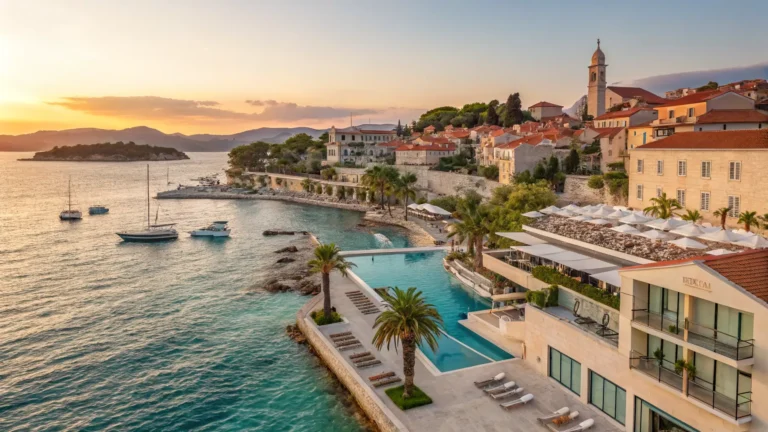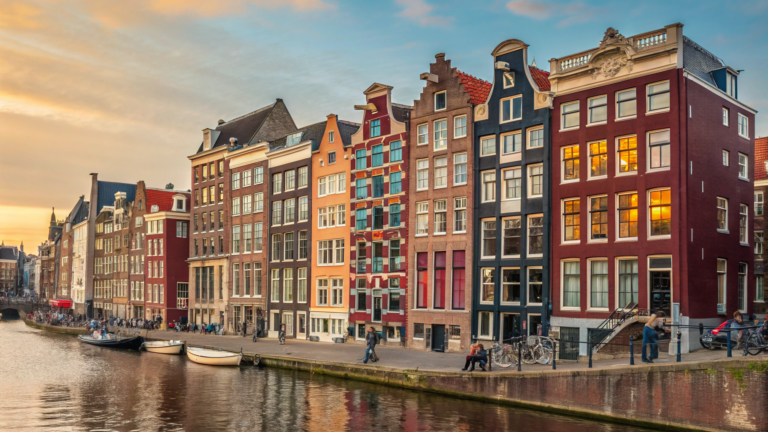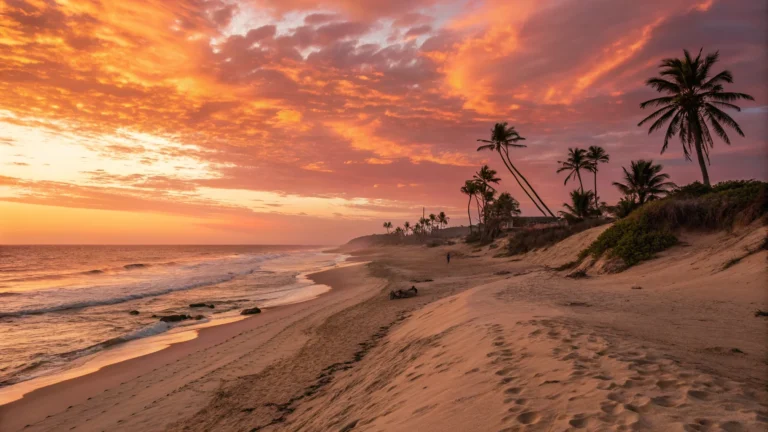Beach Wedding Aesthetic How to Style It in 5 Steps
Last October, my sister Rachel burst into my apartment at 7 AM with mascara streaks down her cheeks and a crumpled invitation in her hand. “Look at this!” she wailed, shoving the paper in my face. It was her ex-boyfriend’s wedding announcement – a gorgeous beach ceremony in Monterey. “I want mine to be better,” she declared. “But I don’t even know where to start with this beach thing.”
Six months later, I’m sitting here writing this while looking at photos from Rachel’s wedding last weekend. Holy crap, it was stunning. Like, stop-strangers-on-the-street-to-show-them-photos stunning. But getting there? That was a journey filled with epic fails, middle-of-the-night panic calls, and more Pinterest rabbit holes than I care to admit.
See, here’s what nobody tells you about beach weddings: they sound all romantic and breezy until you’re standing in 20-mph winds watching your carefully planned centerpieces become airborne missiles. Or until you realize that “golden hour” lighting everyone raves about lasts exactly 20 minutes, and if you’re not ready, you’re screwed.
But Rachel’s wedding worked. Like, really worked. And not just because it looked pretty (though it did). It worked because we figured out the secret sauce – and I’m gonna share every messy, honest detail with you.
Step 1: Figure Out What Kind of Beach Wedding Actually Fits Your Personality
Rachel’s first mistake was trying to copy every beach wedding she’d ever seen on Instagram. Boho macrame? Check. Elegant white linens? Check. Tropical flowers? Check. Nautical rope details? Double check. The result looked like a wedding supply store had a nervous breakdown.
Two weeks before the wedding, we had to strip everything back and start over. Best decision ever.
Here’s the real talk: there are basically five types of beach weddings that actually work, and you need to pick ONE. Not two, not three – one. Otherwise, you’ll look like you couldn’t make a decision, which is not the vibe you want on your wedding day.
The Laid-Back Boho Beach Wedding This is for the couple who shops at farmers markets and has plants taking over their apartment. Think macrame, pampas grass, and colors that look like they were pulled from a California sunset. Rachel’s friend Jess went this route, and honestly? It was perfection. Everything felt effortless and organic, like the wedding just naturally grew out of the sand.
The Sophisticated Coastal Elegance Thing For couples who drink wine instead of beer and actually iron their sheets. This is crisp whites, navy accents, and details that whisper “expensive” without being flashy. My cousin did this last year, and even though we were literally sitting on sand, it felt like we were at a country club.
The Full-On Tropical Paradise Explosion Bright colors, exotic flowers, and vibes that scream “we’re on vacation!” This works if you’re naturally fun and outgoing – the kind of people who throw themed parties and actually pull them off.
The Classic Nautical Romance Navy and white with just enough rope and anchor details to feel maritime without looking like a theme restaurant. It’s preppy but not stuffy, and it photographs like a dream.
The “Less is More” Minimalist Beach For couples who think most weddings are too much. Clean lines, neutral colors, and letting the ocean do the heavy lifting. Occasionally, the quietest comment has the greatest impact.
Rachel ended up choosing boho with tiny nautical touches – think rope-wrapped vases and flowing fabrics in ocean colors. The key was committing to one main style and just hinting at the other.
The color palette wake-up call: Rachel originally wanted coral and turquoise because they looked amazing on her phone. Then we actually went to the beach with fabric samples. Disaster. Those colors looked fake and cheap against the real ocean. Like, embarrassingly bad.
We switched to dusty blue, soft peach, and ivory – colors that complemented the water instead of competing with it. The difference in her photos is incredible. Everything looks intentional and harmonious instead of like we were trying too hard.
Step 2: Choose Your Beach Like Your Sanity Depends on It
I’m gonna be blunt here: some beaches are wedding nightmares disguised as pretty backdrops. Rachel almost learned this the hard way.
Her first choice was this gorgeous hidden cove that required a 15-minute hike through loose sand to reach. Sounds romantic, right? Until you imagine her 85-year-old grandpa making that trek in a suit, or the string quartet hauling their instruments through sand dunes.
Access is everything. Rachel’s wedding party included her pregnant sister, her fiancé’s parents who both use canes, and about twelve other people over 60. We needed a beach where humans could actually get to the ceremony without requiring a sherpa.
She ultimately decided on a beach with a paved walkway leading to a large, level space ideal for seats and a tiny dance floor.Everyone could get there comfortably, the vendors could set up without drama, and we didn’t spend the whole day worried about people falling in the sand.
Tide times will make or break you. This is not optional knowledge. Rachel’s original ceremony time coincided with high tide, which would have put the altar underwater. We moved everything two hours earlier, which actually worked out better because the lighting was incredible.
Permits and rules are boring but necessary. Some beaches require permits, have noise restrictions, or charge fees that’ll blow your budget. Rachel’s beach was part of a state park with simple rules and reasonable costs. Sometimes the practical choice is better than the “perfect” choice.
For setup, we learned that simple is smart. Rachel’s altar was driftwood we found on the beach that morning (free!), wrapped with white fabric secured with clear fishing line. Two low flower arrangements in weighted vases. Done. The ocean provided the rest of the decor.
Weather backup plans are not suggestions. Even if the forecast looks perfect, have a plan B. Rachel rented a white tent and kept it folded behind the dunes. When surprise drizzle started during cocktail hour, we had it up in ten minutes. Worth every penny for the peace of mind alone.
Step 3: Dress for Reality, Not for Pinterest
Rachel spent three months trying to find a dress that looked like a Disney princess but would work on a beach. Spoiler alert: those don’t exist. Ballgowns and sand are natural enemies.
The reality check came when she tried on her dream dress and attempted to walk across the bridal shop’s carpet. The train collected every piece of lint, dust, and debris in its path. Imagine that happening with sand, seaweed, and salt spray.
Her final dress was a flowing A-line in silk chiffon with a subtle train that could be bustled for reception dancing. In photos, it looks romantic and effortless. In real life, she could walk, dance, and even chase her flower girl nephew without wrestling with fabric.
Beach wedding dress fabrics that actually work:
- Chiffon flows beautifully and doesn’t stick to your legs in humidity
- Lightweight crepe holds its shape without being stiff
- Silk georgette drapes perfectly and catches light beautifully
- Cotton blends for more casual ceremonies
Fabrics to avoid like the plague:
- Heavy satin (gorgeous but fights every breeze)
- Anything with a cathedral train (unless you want to collect half the beach)
- Fabrics that wrinkle easily (salt air is not your friend)
For the guys, Rachel’s husband wore khaki linen pants with a white cotton shirt and navy suspenders. No jacket, no tie, sleeves rolled up. He looked relaxed and handsome, and more importantly, he wasn’t dying of heat stroke.
Let’s talk about shoes honestly. Rachel’s bridesmaids started in nude flats, switched to barefoot for photos, then changed into flip-flops for dancing. The groomsmen ditched their shoes after the ceremony and never looked back. Anyone who tries to wear heels or dress shoes in sand is either brave or foolish – probably both.
Rachel’s makeup artist (who’d done dozens of beach weddings) used waterproof everything and created a loose, textured updo that looked intentionally tousled when the wind played with it. The goal was working with the elements, not against them.
Step 4: Decorate Like You Belong There
Rachel’s original Pinterest board looked like a beach-themed restaurant exploded. Shells everywhere, driftwood sculptures, enough nautical rope to rig a ship, and centerpieces that belonged in a tiki bar.
The beaches that look best in wedding photos are the ones where you can barely tell anything was added. The secret is enhancing what’s already stunning, not covering it up with a bunch of stuff.
Decor that makes sense on beaches:
- Driftwood pieces arranged naturally (we collected ours the morning of)
- Hurricane lanterns that won’t become projectiles
- Flowing fabrics that are properly secured but allowed to move
- Natural rope and jute details that belong in the setting
- Minimal shell and sea glass accents (emphasis on minimal)
Rachel’s ceremony aisle was lined with hurricane lanterns filled with sand and pillar candles. Simple, beautiful, and they stayed put when the wind picked up. Her reception tables had low arrangements in mason jars weighted with decorative sand – pretty and practical.
Beach flowers require strategic thinking. Rachel’s florist initially suggested garden roses and hydrangeas, which would have been wilted disasters within an hour of salt air exposure.
Flowers that can handle beach conditions:
- Succulents (nearly indestructible and very trendy)
- Eucalyptus (smells incredible and doesn’t wilt)
- Sunflowers (if they match your vibe)
- Local wildflowers (already adapted to the climate)
- Hardy roses (surprisingly tough)
Rachel’s bouquet was loose and organic – succulents, eucalyptus, and some beach grass we found growing nearby. It looked like she’d gathered it during a romantic beach walk, which was exactly the vibe we wanted.
The biggest lesson learned: everything needs to be anchored or weighted. Pretty fabric that’s not secured becomes a safety hazard. Lightweight signs turn into frisbees. We brought sandbags, fishing weights, and heavy-duty clips for everything.
Step 5: Plan a Reception That Works in the Real World
Most couples plan beach wedding receptions like they’re having a regular party that just happens to be on sand. Big mistake. Sand changes everything – how people move, what they wear, how they eat, even how they dance.
Rachel’s reception worked because we planned for beach-specific reality. We rented a small wooden platform for dancing because trying to dance in sand is exhausting and not particularly elegant. We chose string lights over chandeliers because nothing ruins a party like getting knocked unconscious by flying decor.
Beach wedding food needs serious strategy. Heavy, creamy dishes in beach heat make people miserable. Rachel served grilled local fish, fresh salads with seasonal ingredients, and lots of chilled appetizers. Everything tasted great and made sense for the setting.
We also ditched the traditional buffet line concept. Asking people in formal wear to navigate sand while balancing plates is asking for trouble. Rachel chose family-style service that kept people comfortable at their tables.
Music for beaches is trickier than you think. The ocean provides constant background noise, which means your music needs to complement it, not compete. Rachel hired an acoustic duo for the ceremony and a small band for dancing – nothing too loud or overwhelming.
During cocktail hour, she set up lawn games that worked in sand: oversized Jenga, ring toss, and cornhole. Guests had fun activities during photos, and it kept the energy up without requiring a DJ.
Temperature swings are real on beaches. Even summer evenings can get surprisingly chilly once the sun disappears and the ocean breeze kicks up. Rachel provided lightweight shawls and had a basket of flip-flops for anyone whose feet got tired.
The Money Talk: Beach Wedding Budget Reality
Beach weddings can be surprisingly affordable when you make smart choices. The natural setting does most of your decorating, and you can DIY elements that would cost a fortune to rent.
Rachel saved serious money by:
- Making her own driftwood signage during a fun crafting weekend
- Choosing local, seasonal flowers exclusively
- Keeping her guest list smaller (beach logistics naturally limit numbers)
- Having ceremony and reception in the same location
- Embracing simple decor that highlighted natural beauty
Where beach weddings are worth the splurge:
- Experienced beach wedding photographer (lighting is everything)
- Quality sound equipment (ocean noise can interfere)
- Solid weather backup plans (tents, alternative venues)
- Guest comfort considerations (transportation, seating, refreshments)
Rachel’s photographer had shot over 100 beach weddings and knew exactly how to work with changing light, wind-blown hair, and sandy backgrounds. Those photos were worth every penny.
What Rachel’s Wedding Taught Me About Beach Wedding Success
Standing there watching Rachel dance with her new husband, fairy lights twinkling overhead and waves providing nature’s soundtrack, I had one of those moments where everything clicked into place.
The best beach weddings aren’t the ones that look most like magazine spreads. They’re the ones where couples stop fighting the natural setting and start dancing with it instead.
Rachel’s wedding was magical because she finally stopped trying to control every element and started embracing them. The wind that initially terrified her created the most beautiful movement in her dress and the ceremony draping. The sand that seemed problematic became the perfect element that had everyone relaxing and connecting in ways they wouldn’t at a traditional venue.
My favorite moment wasn’t even photographed. It happened during dinner when Rachel’s new father-in-law started telling stories about his fishing adventures, gesturing toward the ocean that had been such a big part of his life. The beach setting created space for those organic, meaningful connections that wouldn’t have happened anywhere else.
The truth about beach weddings? They’re not about creating something perfect – they’re about creating something authentic. The ocean, the sand, the wind, the natural light – they’re all part of your wedding day story. When you stop trying to control them and start incorporating them, magic happens.
Your beach wedding should feel like the most beautiful version of a day you’d naturally want to spend by the ocean with everyone you love most. When you nail that balance, everything else falls into place naturally.
What’s the part of beach wedding planning that’s keeping you up at night? Drop a comment and tell me what you’re struggling with – I promise to share the specific advice that’ll help you figure it out. Rachel and I learned most of these lessons the hard way, so you don’t have to!




